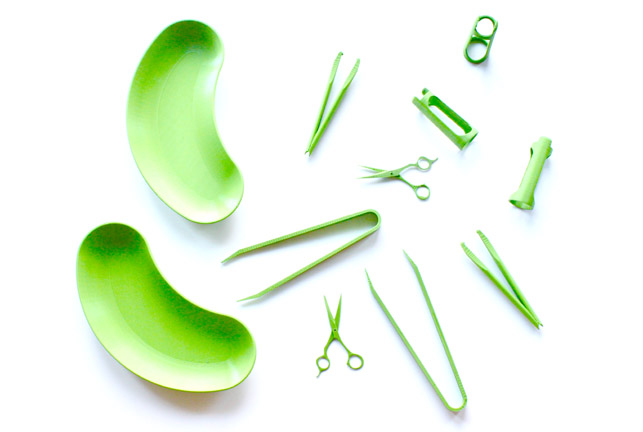
The nanoparticles in the Copper3D filament mean that the products 3D printed from it have antibacterial properties
Not content with creating antimicrobial materials that can help to transform lives in the operating theatre and in postsurgery care, Copper3D is going several steps further, by making these products available on an ondemand basis, via a simple desktop FDM 3D printer.
The company’s antibacterial PLActive material has been proven to eliminate more than 99.99% of fungi, viruses, bacteria and a wide range of microorganisms. When turned into spools of filament, it can be used to 3D print products anywhere in the world – and beyond.
“If you think about this, the concept here is very revolutionary and can be applied to an infinite number of solutions,” says Copper3D director of innovation, Daniel Martínez Pereira. “Not only in the world of healthcare, but also in other areas such as the food industry, veterinary medicine, the aerospace industry, mom and baby appliances, etcetera.”
The filaments consist of recyclable PLA plastic, filled with copper nanoparticles, carrier elements and enhancers, which utilise the inherent antimicrobial properties of the element to eliminate bacteria. Pereira adds that Copper3D is rapidly developing further 3D printing-based, antimicrobial technologies beyond the FDM sphere, and that the company aims to have a complete portfolio of antimicrobial materials “in the coming months.”
Copper3D – huge shifts in sterlisation needs
When all the relevant legal certification is in place, in addition to what Copper3D already holds, this could mean a huge shift in the designs, materials and methods used to create not just surgical implements, but also the trays and peripheral equipment used to store them. Whereas today, everything needs to be sterilised, these products are actively self-sterilising through their own material properties.
On top of that, the material’s ability to be 3D printed in a simple and cost-effective manner like FDM means that vital medical kit, from postoperative prostheses, wound dressings and surgical equipment, can be created anywhere it’s needed, including in areas cut off by war or natural disaster, or even in space.
The Copper3D technology is being developed in Santiago,Chile, and is currently available in the UK and Ireland through sales partner 3DGBIRE, but Copper3D is already heading beyond this world in its work with NASA.
The current method for dealing with medical emergencies on the International Space Station (ISS) is to return astronauts to Earth as soon as possible. As a Plan A, it’s an incredibly difficult, expensive and unpredictable method, to say the least. With missions set to become longer as we reach out to planets like Mars and beyond, it will become increasingly impractical – or even impossible.
In order to try to deal with medical issues in space, NASA has awarded Copper3D funding to test its antibacterial material PLActive on the ISS, with a view to addressing health issues and injuries that are of particular concern to astronauts on longterm space missions.
Take, for example, Immune System Dysregulation: research has shown that astronauts can suffer from this condition while on space missions for longer than six months, leaving them more susceptible to illnesses such as ‘mallet finger’, a common space ailment affecting tendons in the hand.
The Copper3D material is capable of 3D printing splints to help recovery, custom-sized to the crew member’s individual digit, with reduced need to keep removing the splint for cleaning.
More prominently, it is the use of the material’s antimicrobial abilities that might be able to combat bacteria that studies have shown have greater resistance to antibiotics under microgravity or Zero-G conditions.
If the antibiotics we have here on earth are less effective during space flight, then the ability to prevent illness in the first place becomes imperative.
3D printing the required parts on demand, while onboard the ISS, would also mean there is no need for the station to carry a large supply of all the various medical devices astronauts may need, with their sterilisation guaranteed in situ, due to their material properties.






